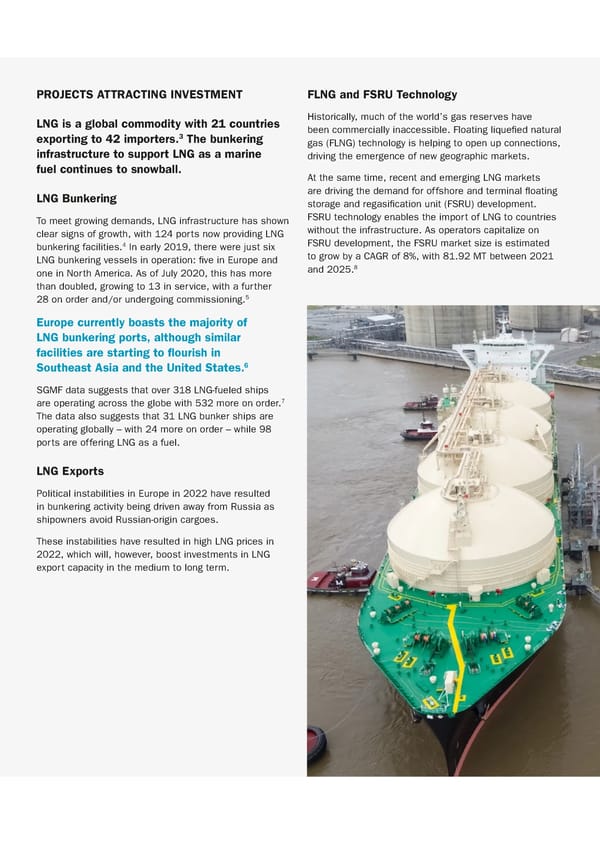PROJECTS ATTRACTING INVESTMENT FLNG and FSRU Technology LNG is a global commodity with 21 countries Historically, much of the world’s gas reserves have 3 been commercially inaccessible. Floating liquefied natural exporting to 42 importers. The bunkering gas (FLNG) technology is helping to open up connections, infrastructure to support LNG as a marine driving the emergence of new geographic markets. fuel continues to snowball. At the same time, recent and emerging LNG markets LNG Bunkering are driving the demand for offshore and terminal floating storage and regasification unit (FSRU) development. To meet growing demands, LNG infrastructure has shown FSRU technology enables the import of LNG to countries clear signs of growth, with 124 ports now providing LNG without the infrastructure. As operators capitalize on 4 FSRU development, the FSRU market size is estimated bunkering facilities. In early 2019, there were just six LNG bunkering vessels in operation: five in Europe and to grow by a CAGR of 8%, with 81.92 MT between 2021 8 one in North America. As of July 2020, this has more and 2025. than doubled, growing to 13 in service, with a further 28 on order and/or undergoing commissioning.5 Europe currently boasts the majority of LNG bunkering ports, although similar facilities are starting to flourish in 6 Southeast Asia and the United States. SGMF data suggests that over 318 LNG-fueled ships are operating across the globe with 532 more on order.7 The data also suggests that 31 LNG bunker ships are operating globally – with 24 more on order – while 98 ports are offering LNG as a fuel. LNG Exports Political instabilities in Europe in 2022 have resulted in bunkering activity being driven away from Russia as shipowners avoid Russian-origin cargoes. These instabilities have resulted in high LNG prices in 2022, which will, however, boost investments in LNG export capacity in the medium to long term.
 TM&I LNG Flexibility Factor Report Page 5 Page 7
TM&I LNG Flexibility Factor Report Page 5 Page 7